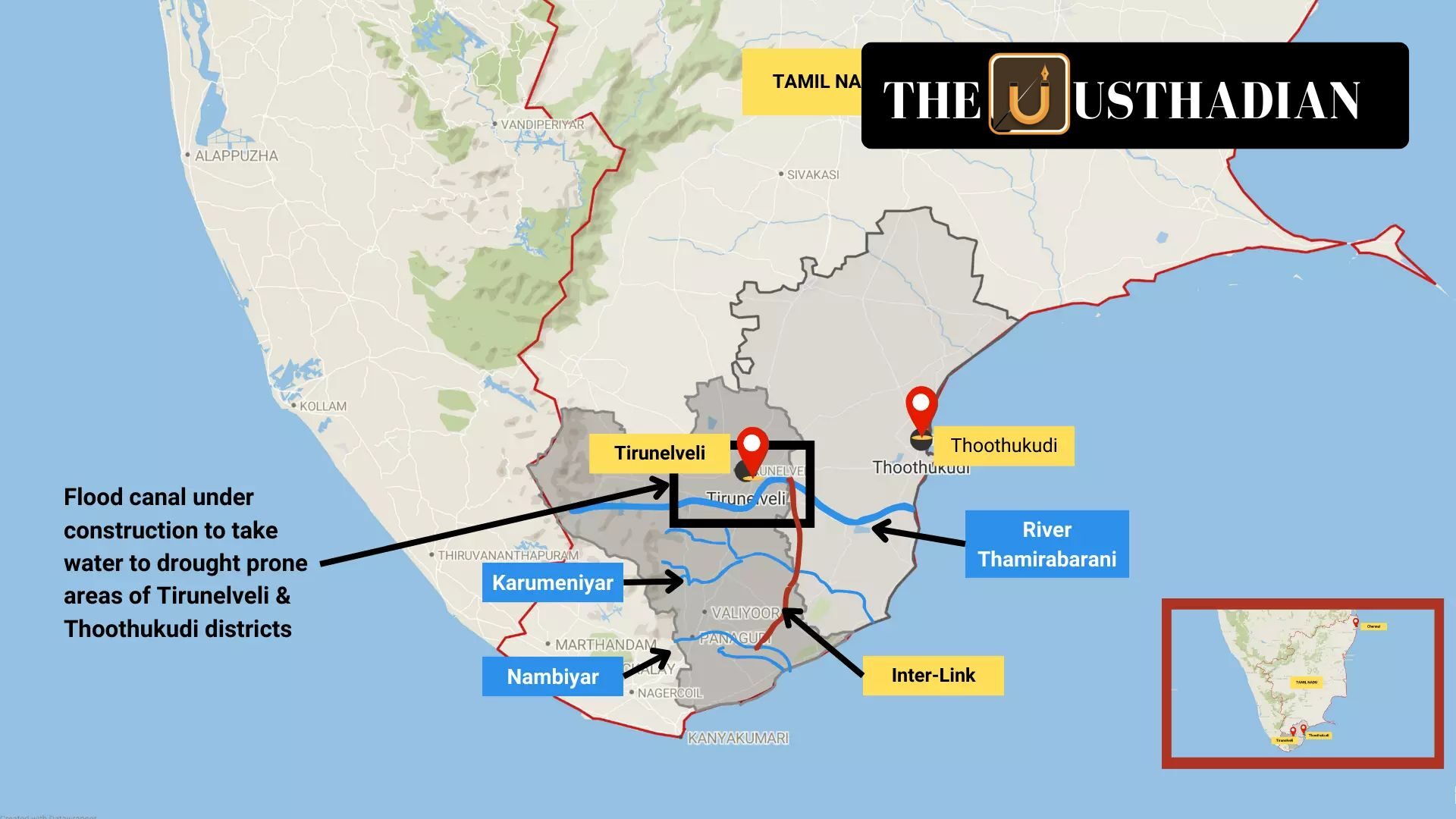A Major Step for Water-Starved Regions
Tamirabharani – Karumeniyar – Nambiyar River Linking Scheme: A Lifeline for Tamil Nadu’s Arid Regions : On February 7, 2025, Tamil Nadu’s Chief Minister M.K. Stalin will inaugurate a crucial irrigation project that promises to revive farming in water-deprived districts. The Tamirabharani – Karumeniyar – Nambiyar River Linking Scheme is not just another infrastructure work—it’s a lifeline for southern Tamil Nadu. Over 15,000 acres of farmland in dry zones like Nanguneri, Thisaiyanvilai, and Sattankulam are set to benefit directly from the improved water access.
Connecting Rivers for a Greener Future
The essence of the project lies in linking three important rivers—Tamirabharani, Karumeniyar, and Nambiyar—through a 73-km-long flood carrier canal. By transporting surplus water from Tamirabharani to drier regions in Tirunelveli and Thoothukudi, the scheme balances water availability and tackles erratic rainfall issues head-on. Farmers who once feared drought years may now hope for a more stable agricultural cycle.
₹900 Crore Investment and the Promise of Returns
This ambitious water management project comes with a hefty price tag of ₹900 crore. The government plans to borrow the amount, betting on the project’s long-term financial returns through increased agricultural output. As fields become productive again, the revenue generated will help pay off the loan—demonstrating a rare blend of infrastructure investment with rural empowerment.
A Delayed Dream Revived
The idea of linking these rivers is not new. Originally proposed around 2011, the project had already seen 50% work completed by 2011 at a cost of ₹205 crore. Unfortunately, it faced a long pause. Now, with renewed urgency and political will, the state government is back on track to complete it within six months. It’s a classic case of how patience and persistent efforts in governance can revive stalled dreams.
Water Diversion Strategy that Makes Sense
The project’s success hinges on its smart use of 13,000 million cubic feet (mcft) of surplus water from the Tamirabharani River. This water will be diverted from the third anaicut, then channelled through the Kannadian Canal for 37 km. From there, a newly built barrage will regulate flow and guide it into the drier zones. The beauty of this plan is that it relies on natural river courses, ensuring less disruption and better efficiency.
Infrastructure to Support Irrigation Goals
A new barrage located 6.4 km downstream is set to control the flow of water and optimize its distribution. This addition enhances water storage and management across the canal system. With improved water regulation, more land can be brought under irrigation, increasing agricultural productivity and ensuring equitable access for farmers.
Impact on Lives and Livelihoods
Over 30,000 people are expected to directly benefit, with welfare support worth ₹203.71 crore being distributed alongside the inauguration. Beyond farming, better water access will boost daily life, from drinking water supply to improved hygiene. In the long run, the scheme hopes to irrigate up to 50,000 hectares, transforming it into a keystone of rural development in Tamil Nadu.
Looking Ahead to Water Security
Even before its completion, the scheme is being hailed as a model for future water projects. As Tamil Nadu battles climate change and rainfall inconsistencies, such efforts offer real hope. Not only will this help in boosting crop yields, but it also signals a shift toward long-term water security planning in the state. Other states facing similar dry conditions may well study this for inspiration.
Static GK Snaphot
Tamirabharani – Karumeniyar – Nambiyar River Linking Scheme: A Lifeline for Tamil Nadu’s Arid Regions :
| Topic | Fact |
| Tamirabharani River | Originates in Western Ghats, flows through Tirunelveli and Thoothukudi |
| Project Length | 73 km flood carrier canal |
| Water Diverted | 13,000 million cubic feet (mcft) |
| Project Investment | ₹900 crore |
| Nambiyar and Karumeniyar Rivers | Tributaries in Tirunelveli contributing to water flow |
| Annual Rainfall in TN | 800 mm – 1,500 mm (some districts as low as 500 mm) |
| Regions Benefiting | Nanguneri, Thisaiyanvilai, Sattankulam |








